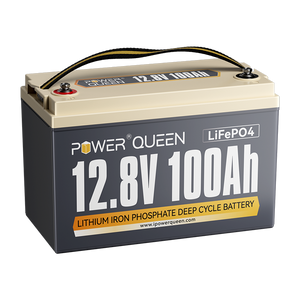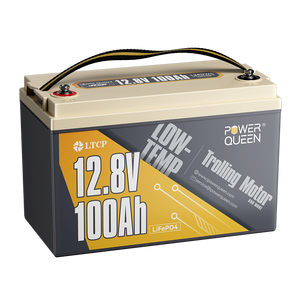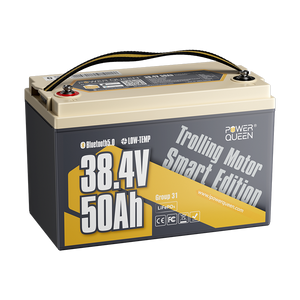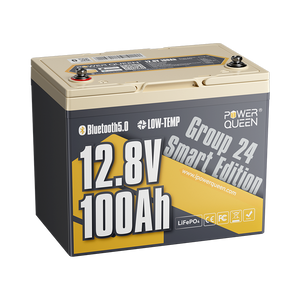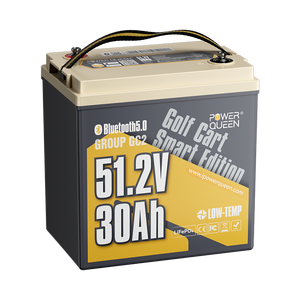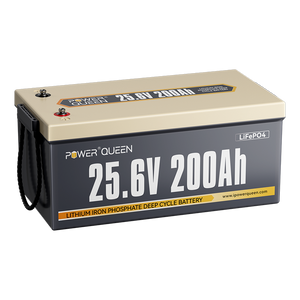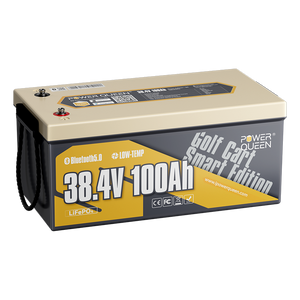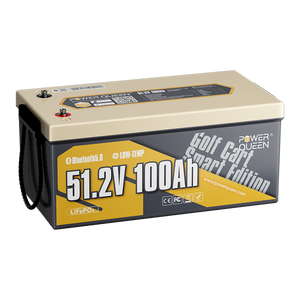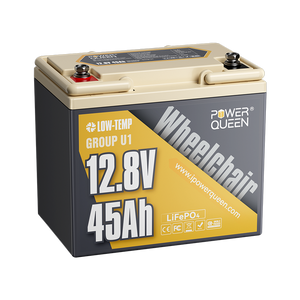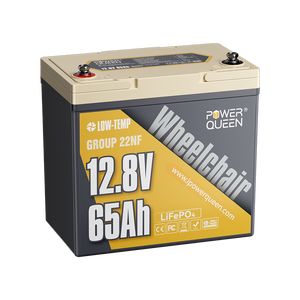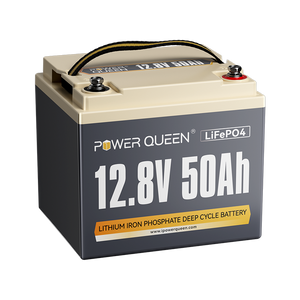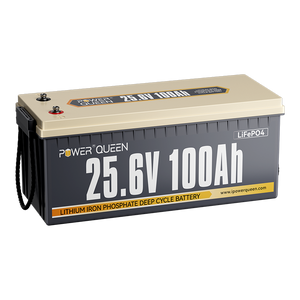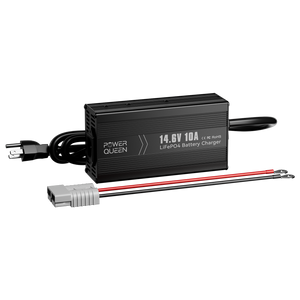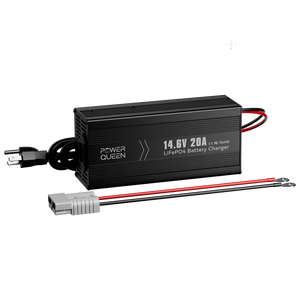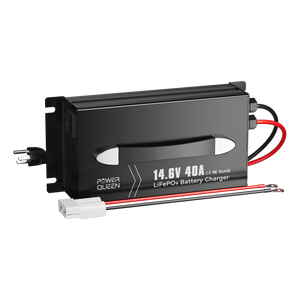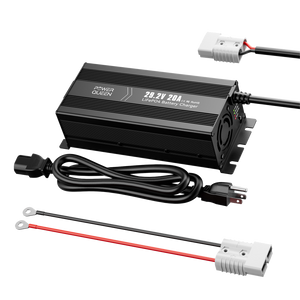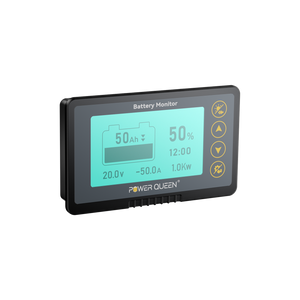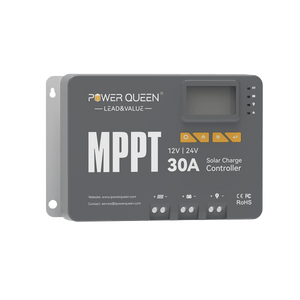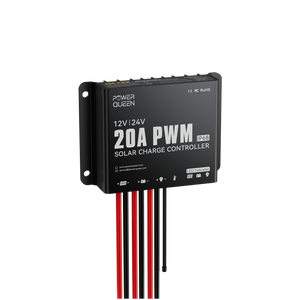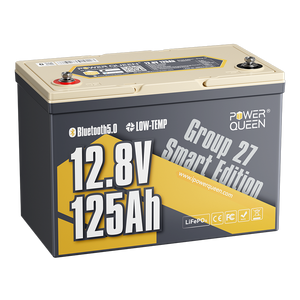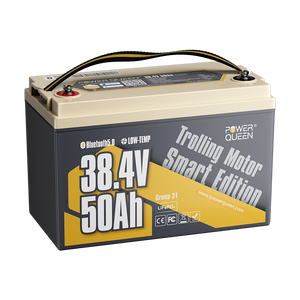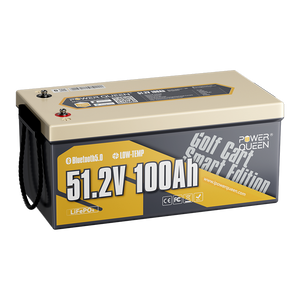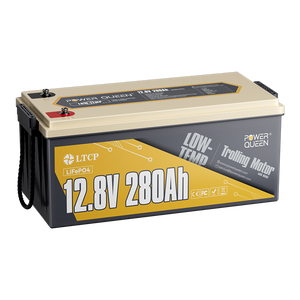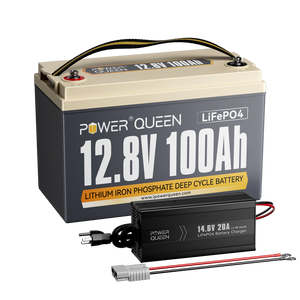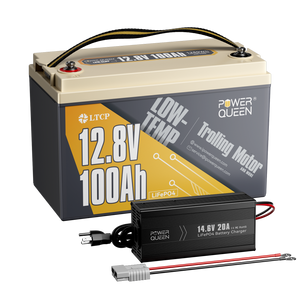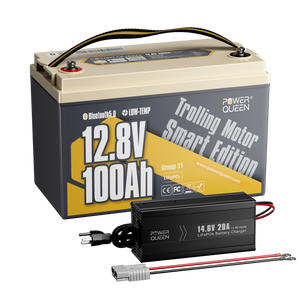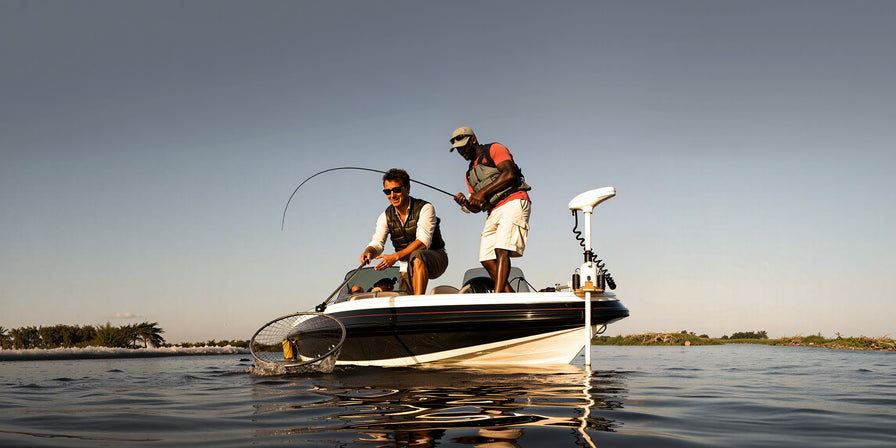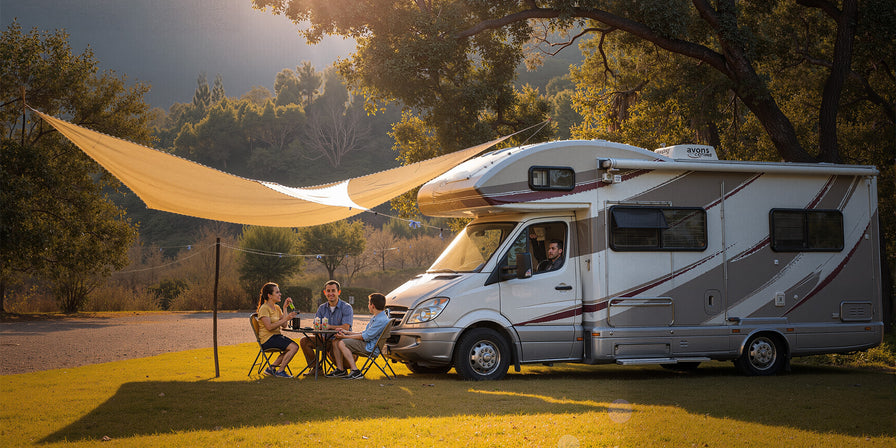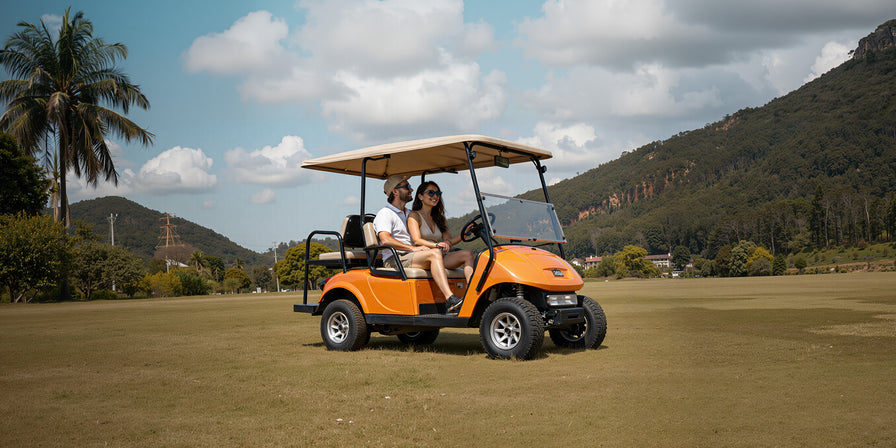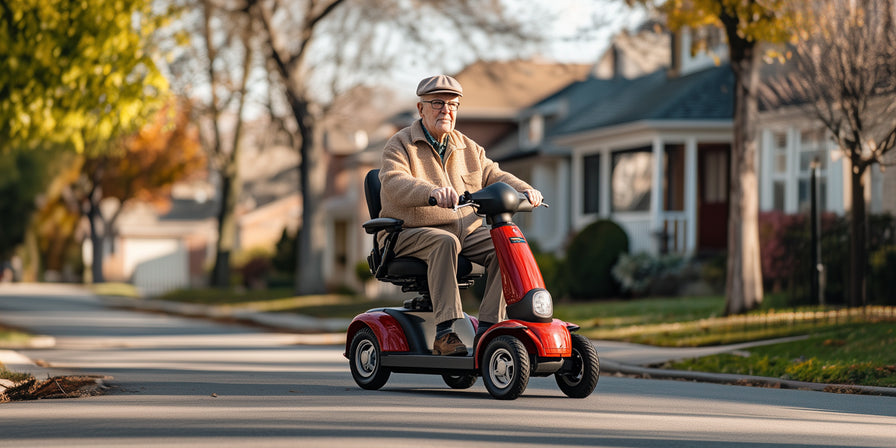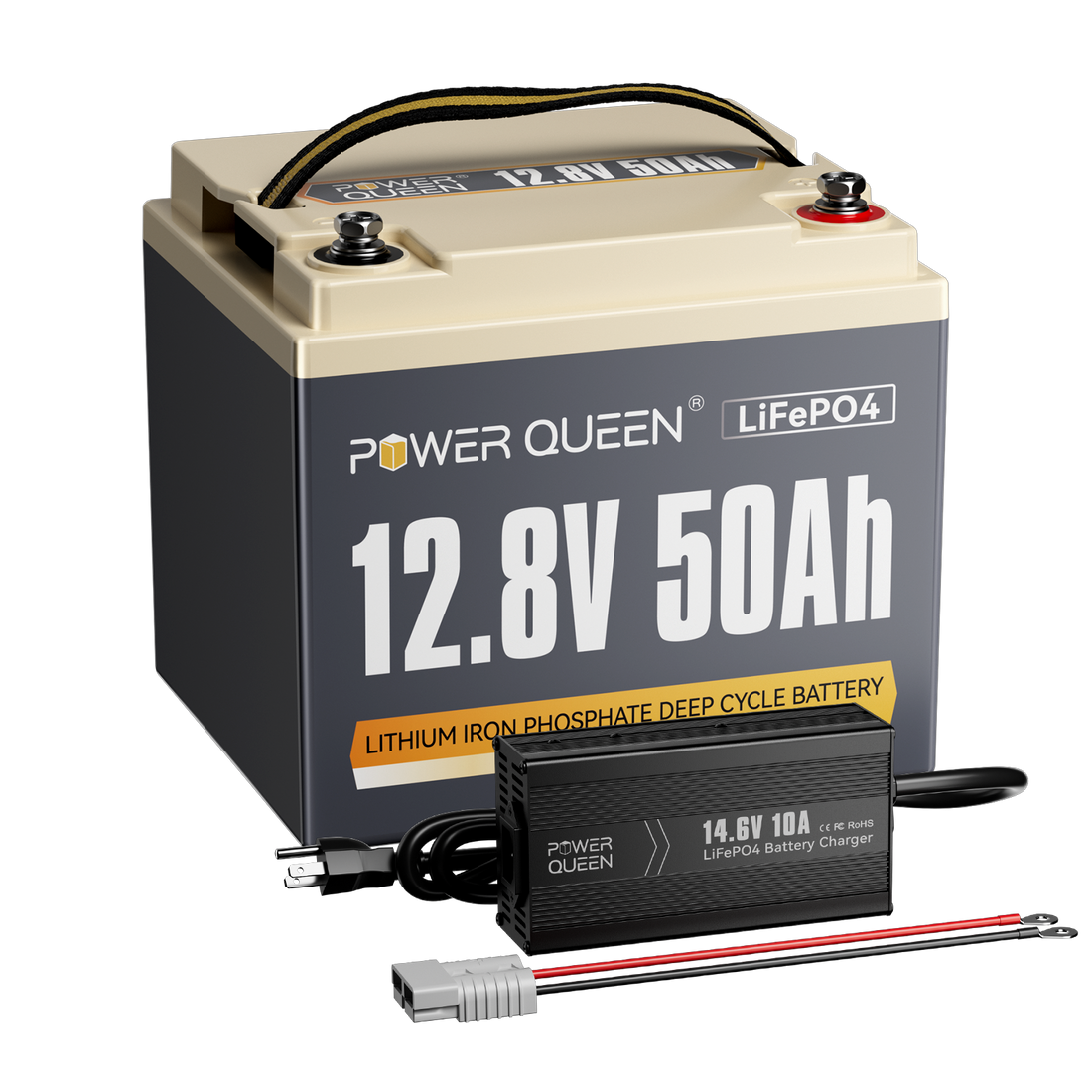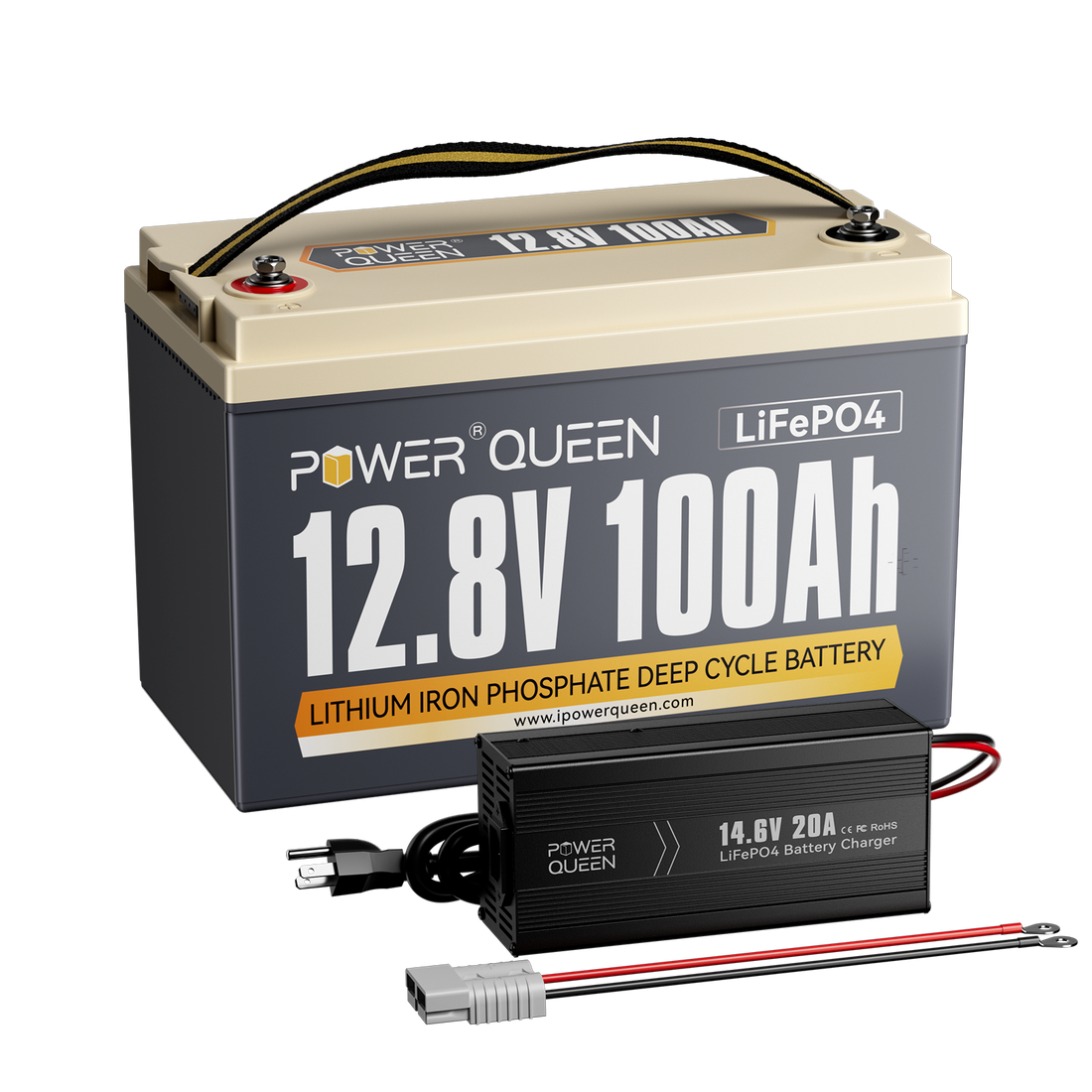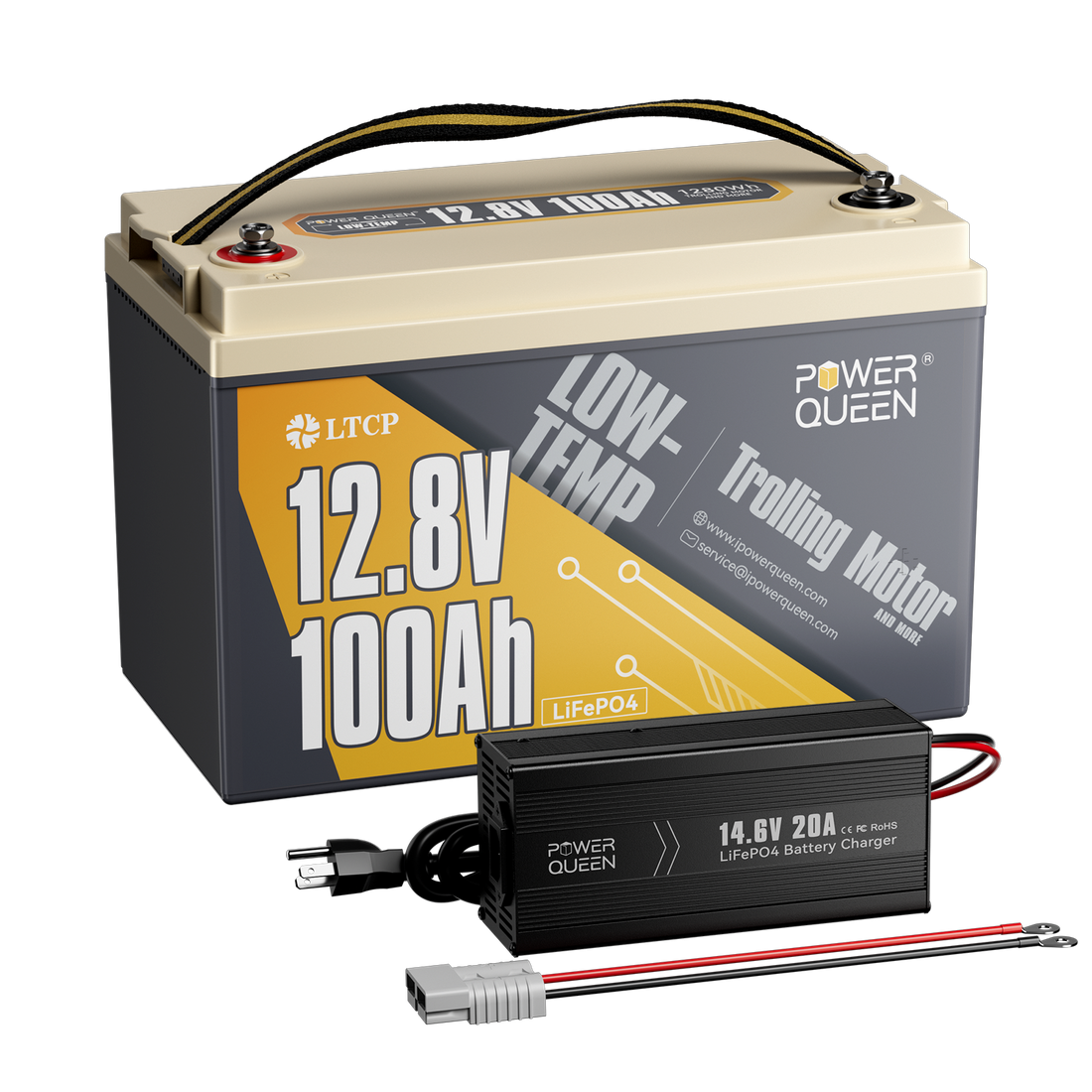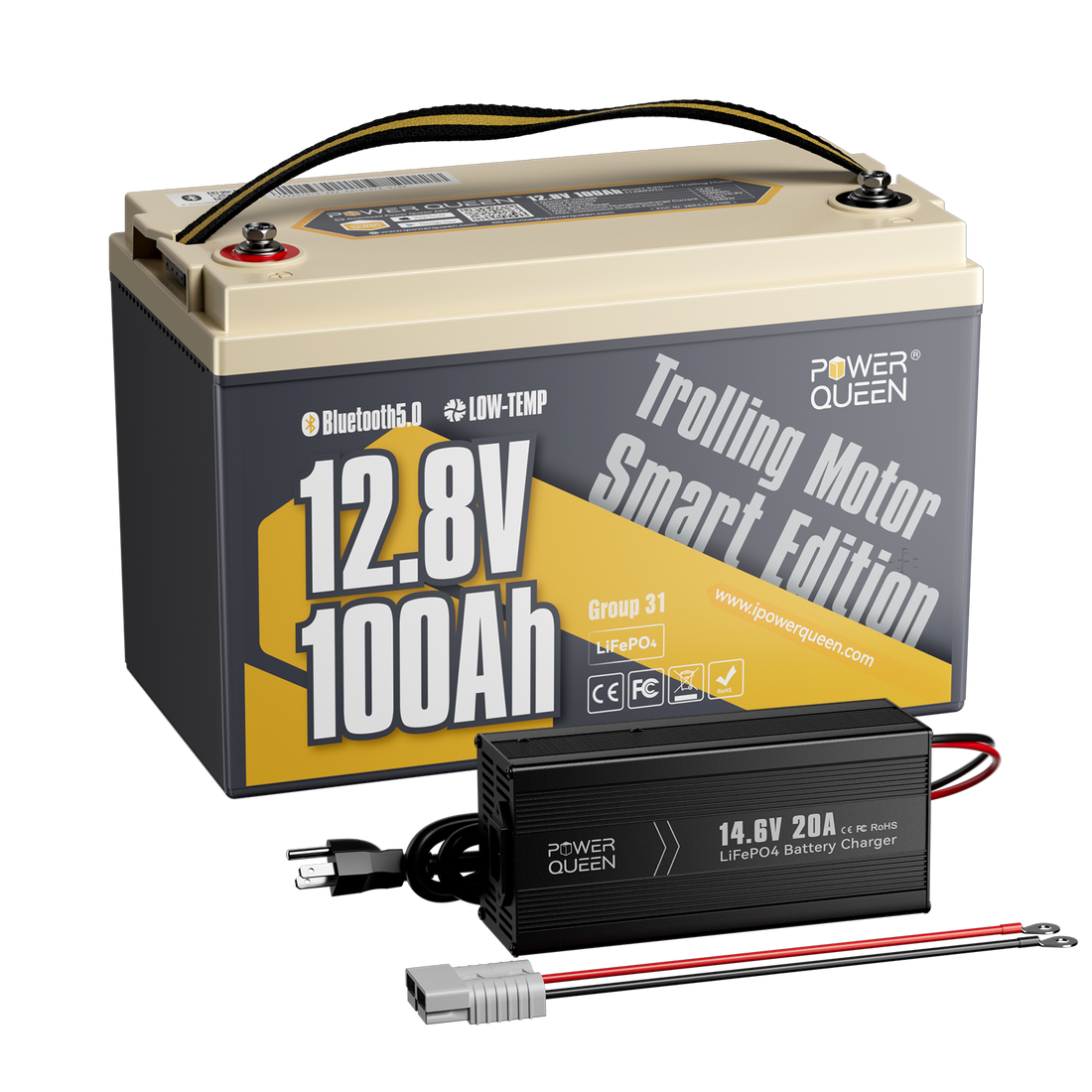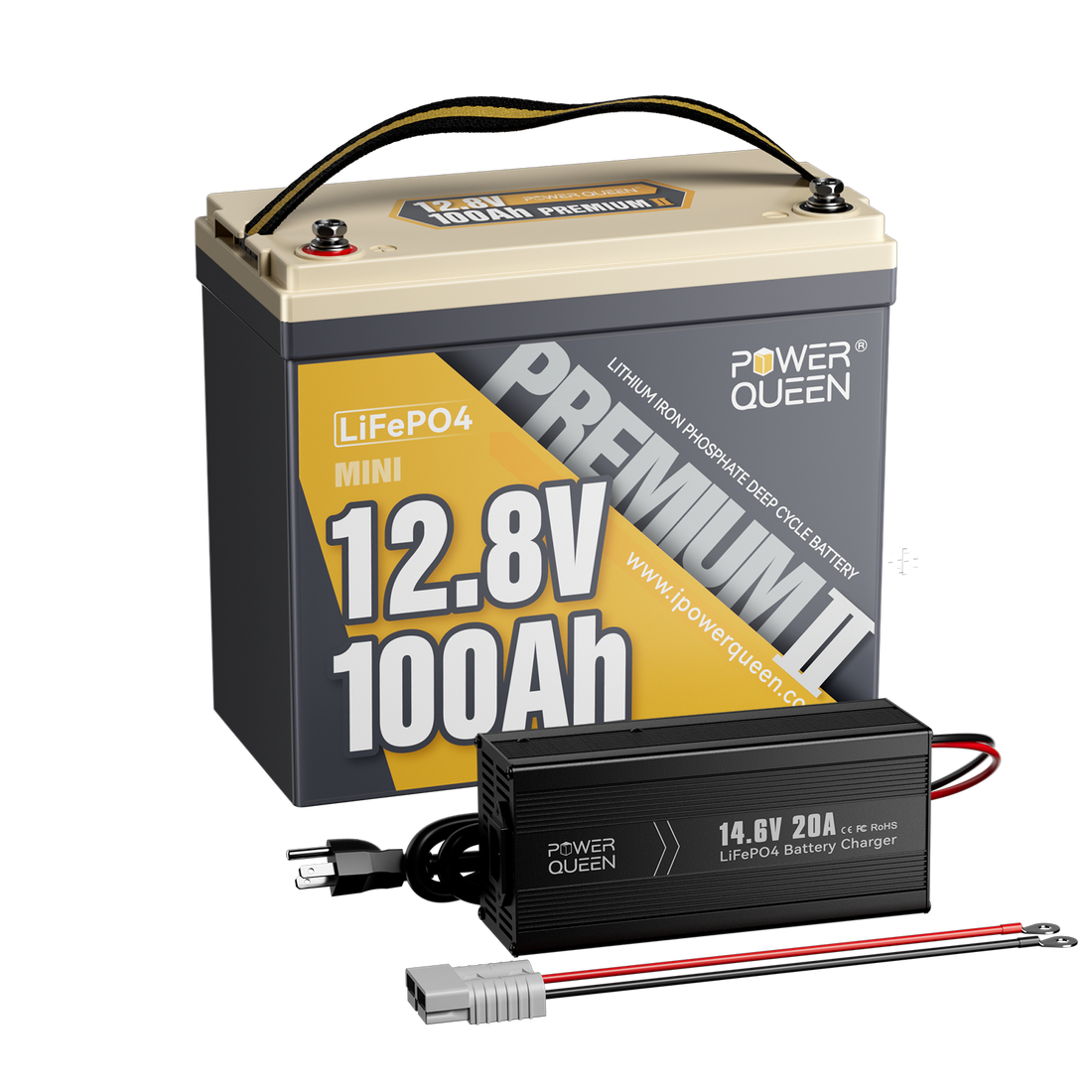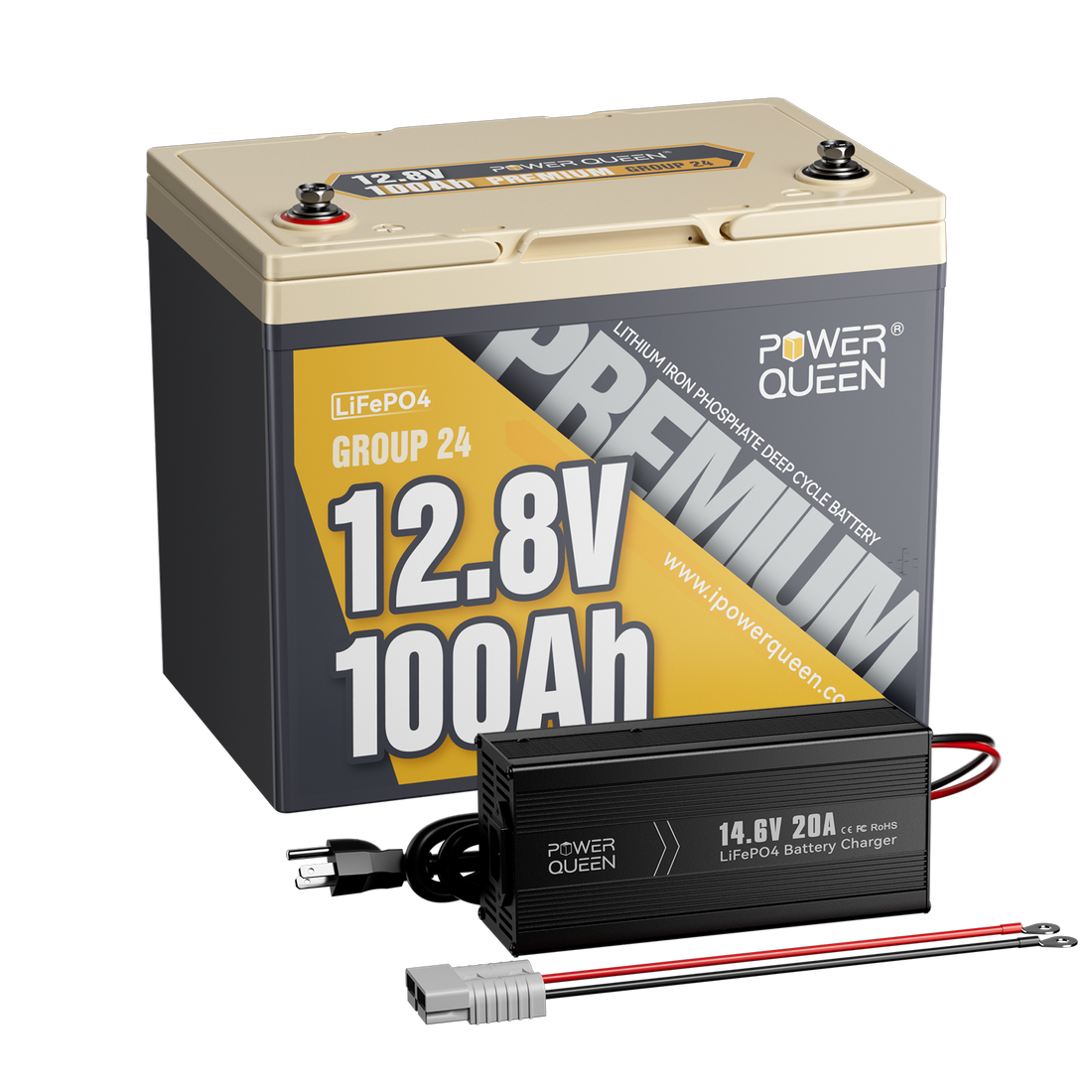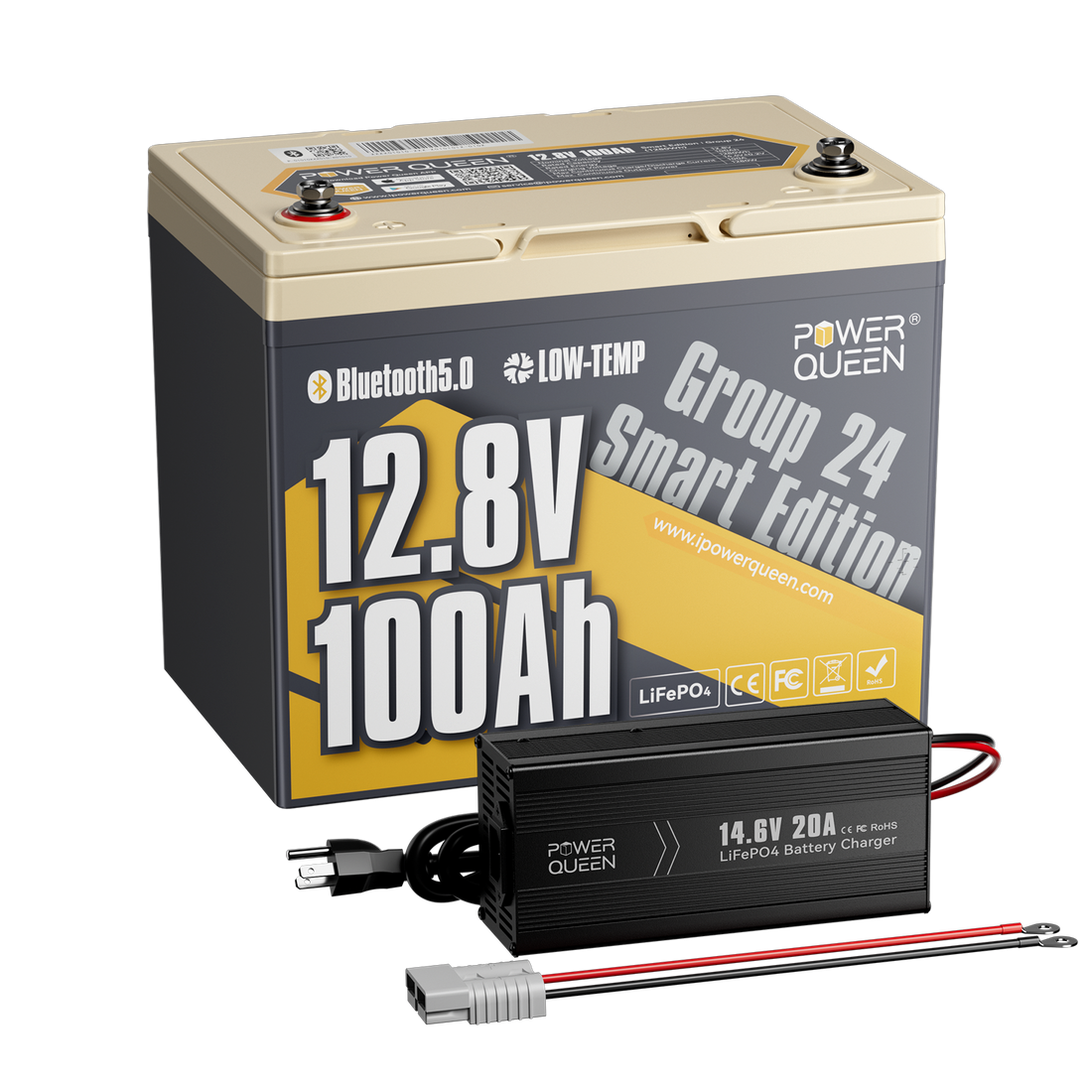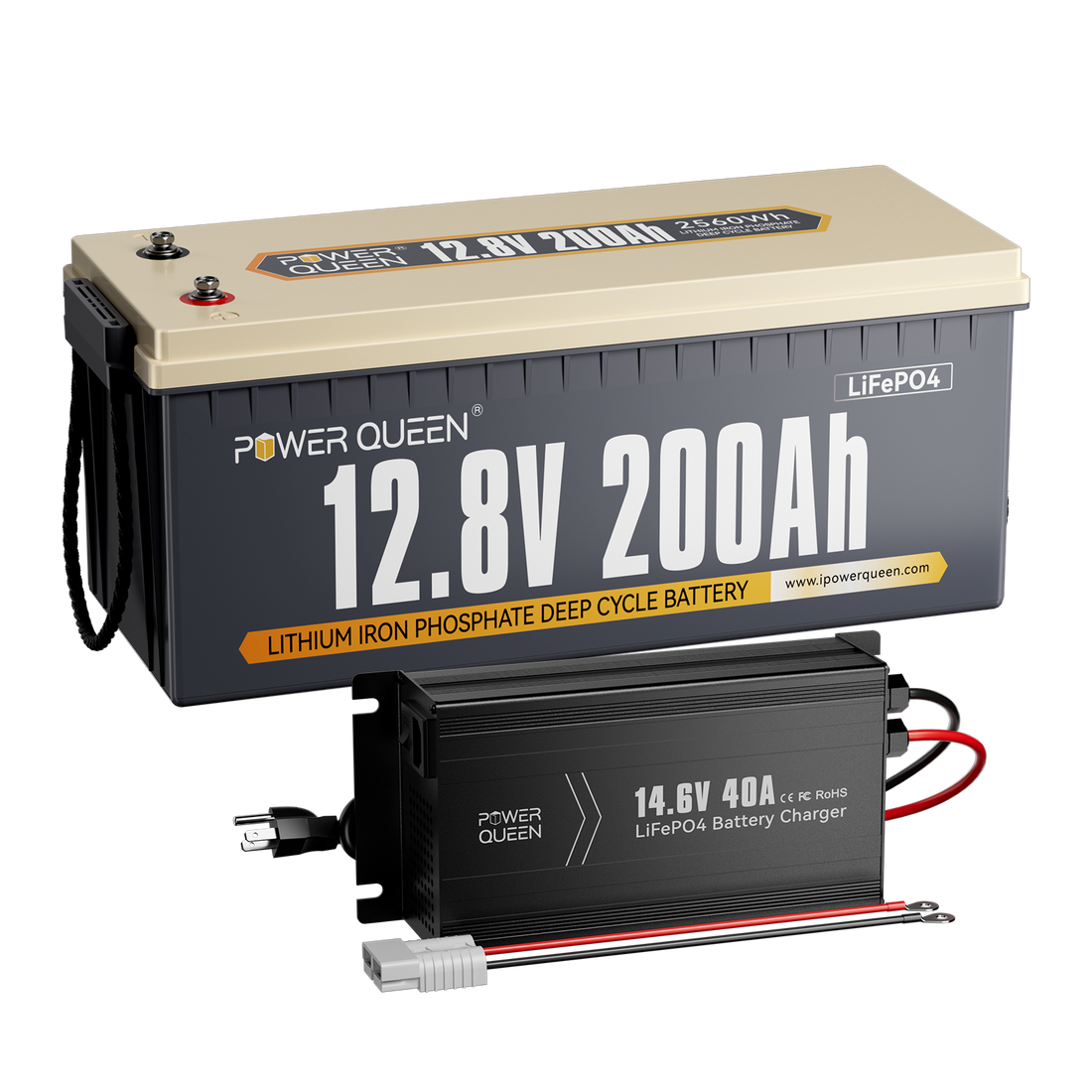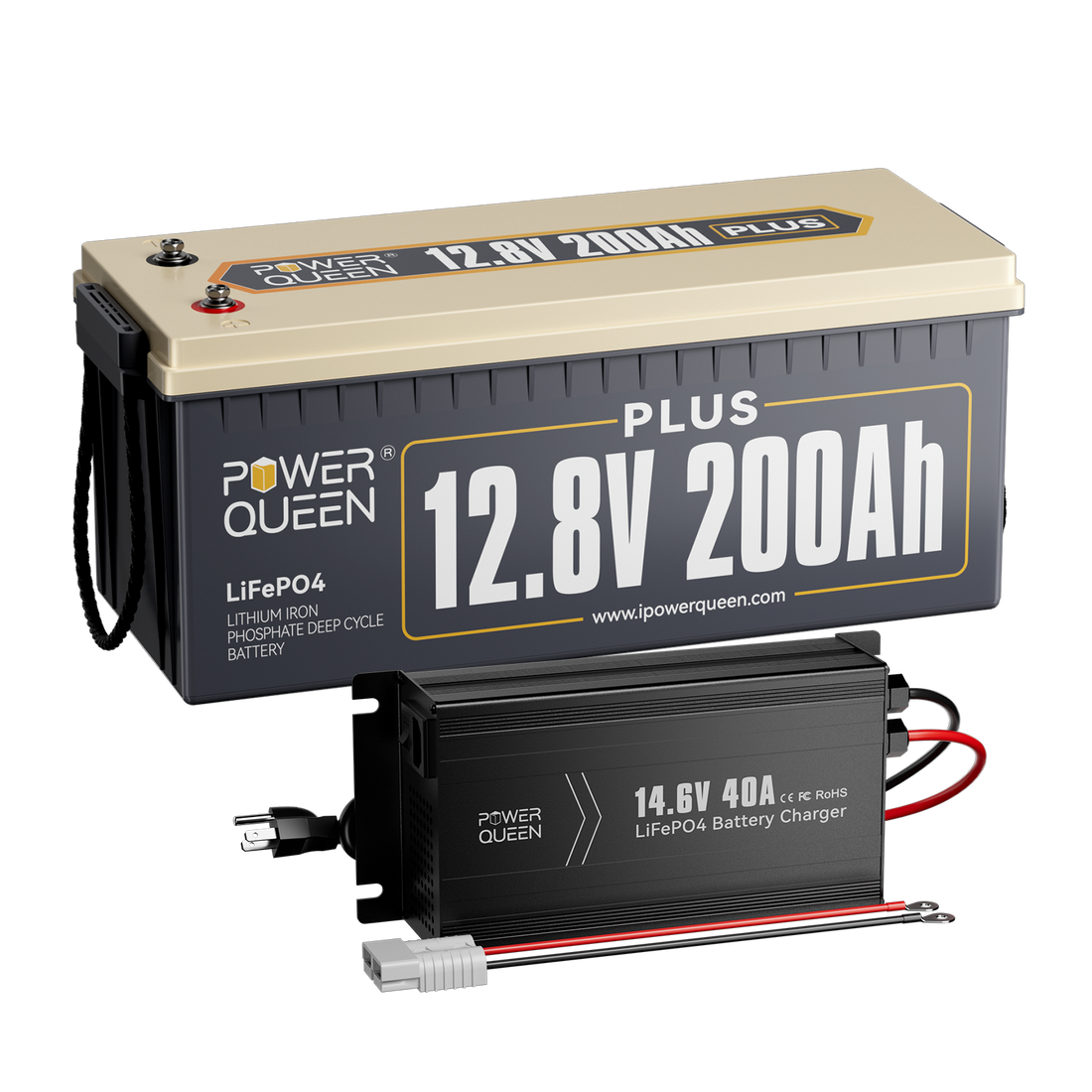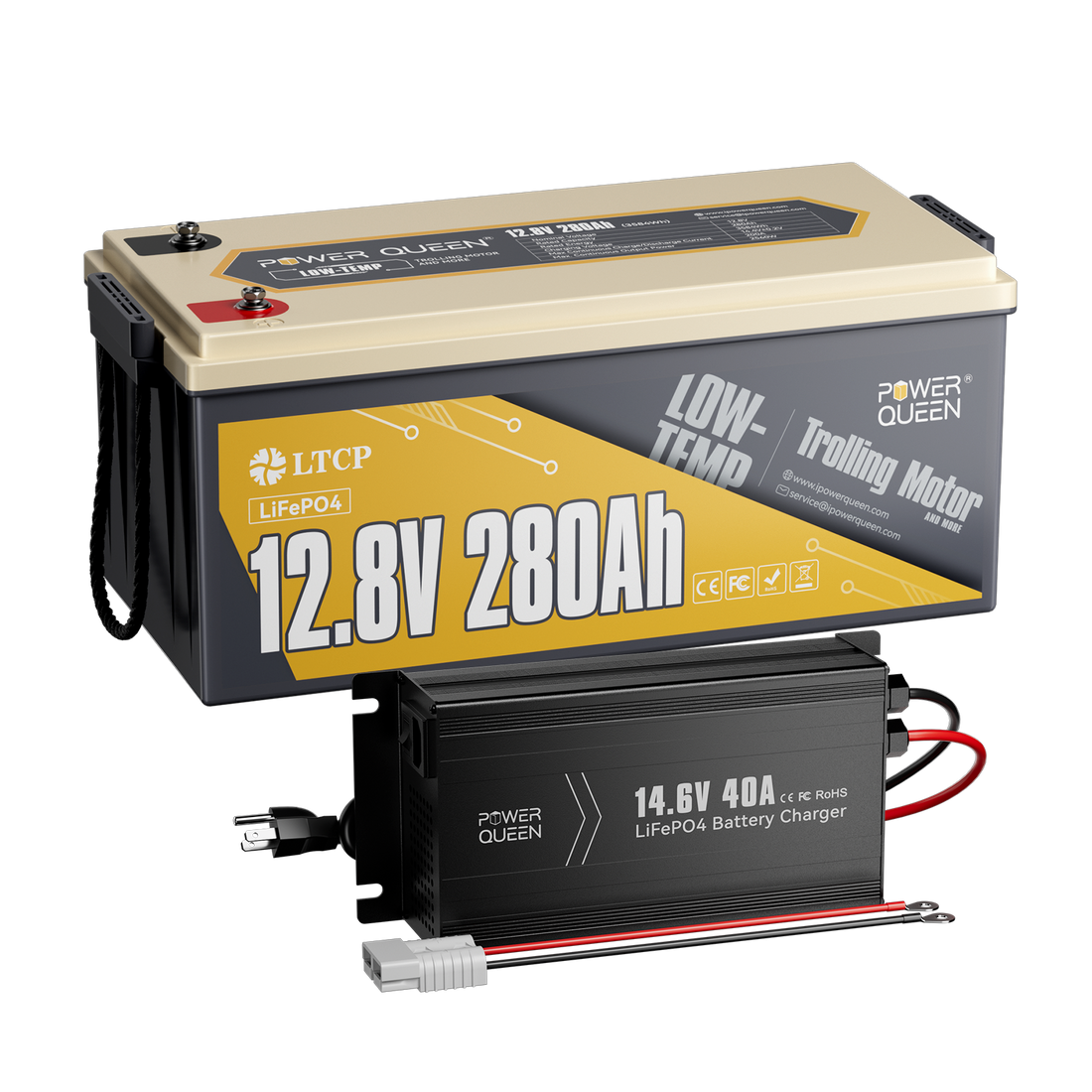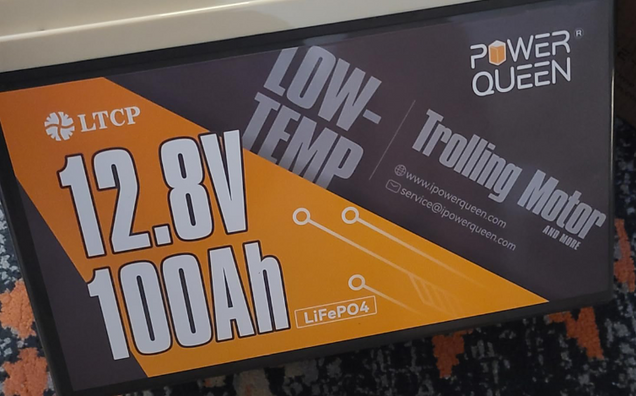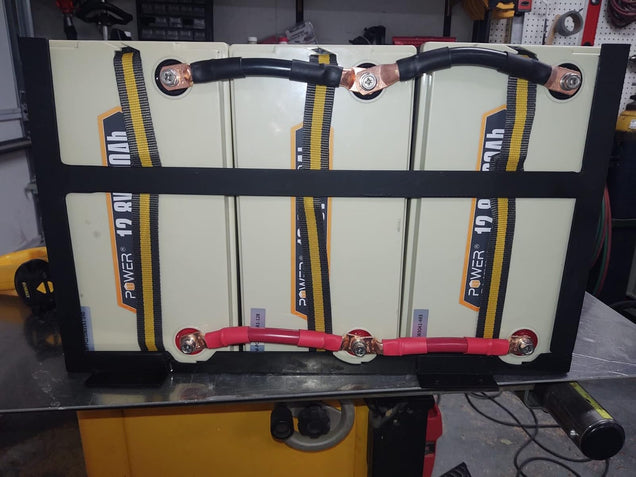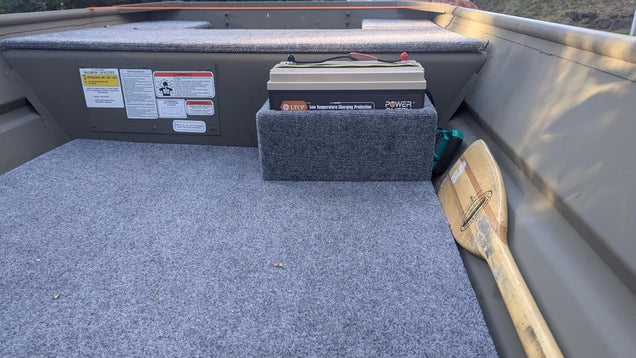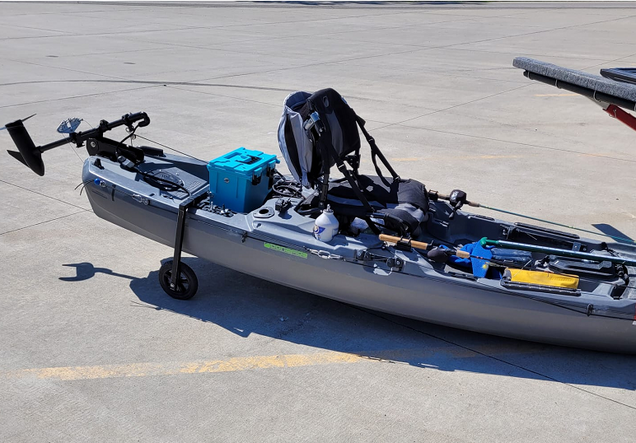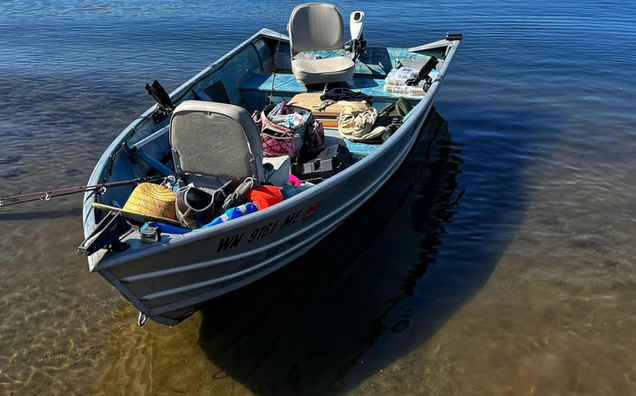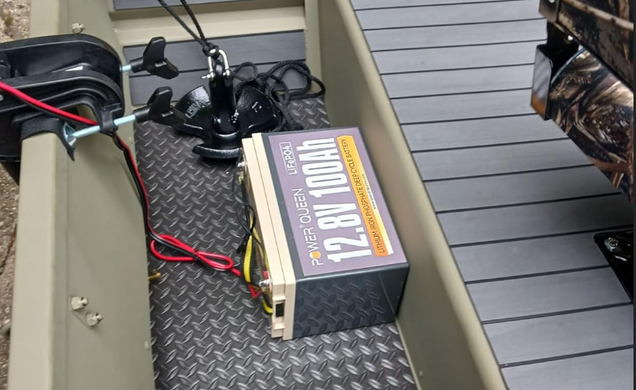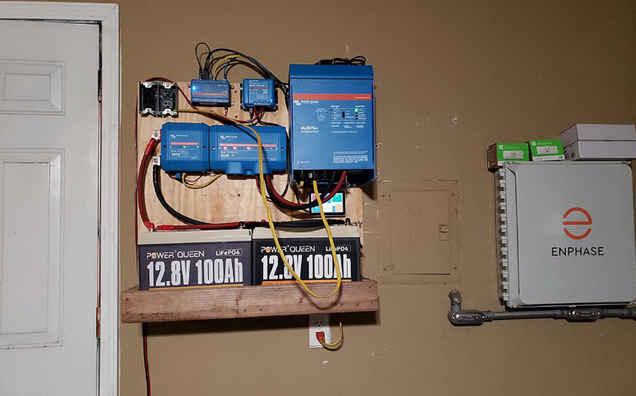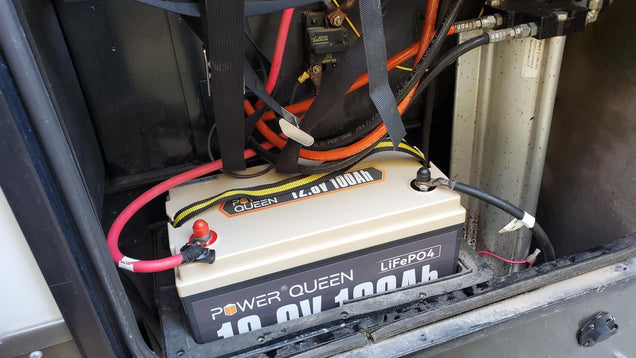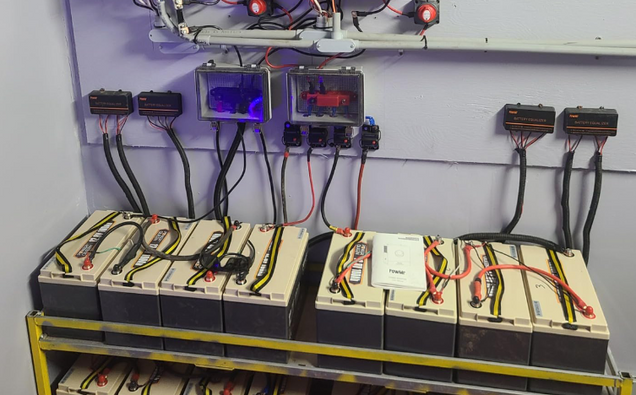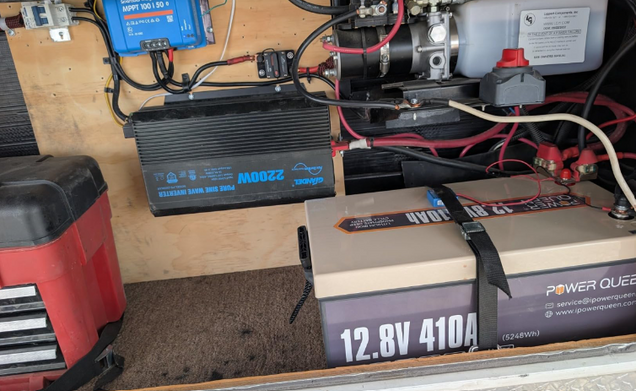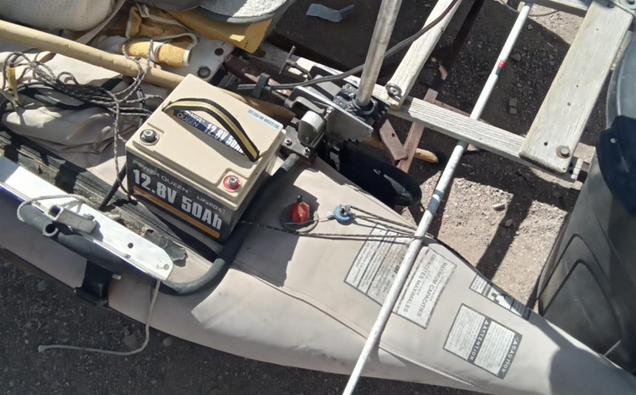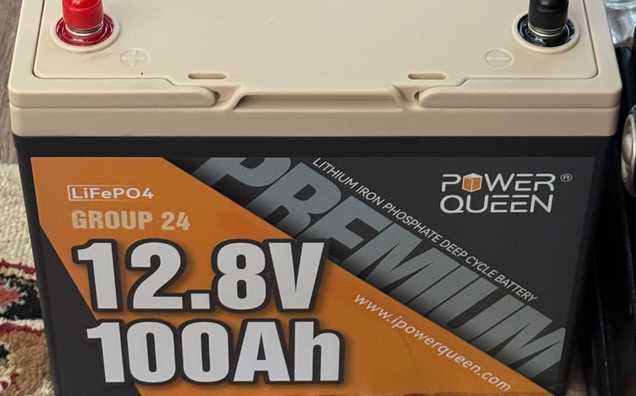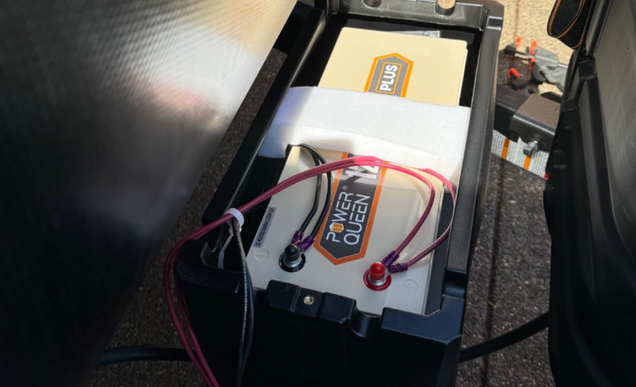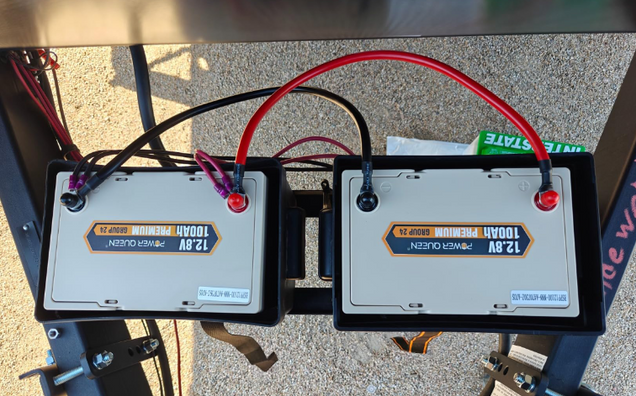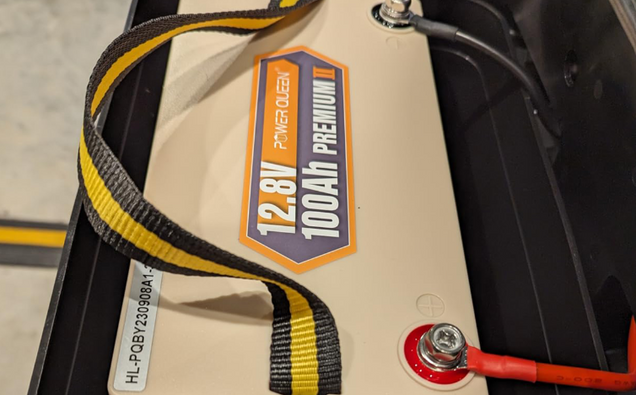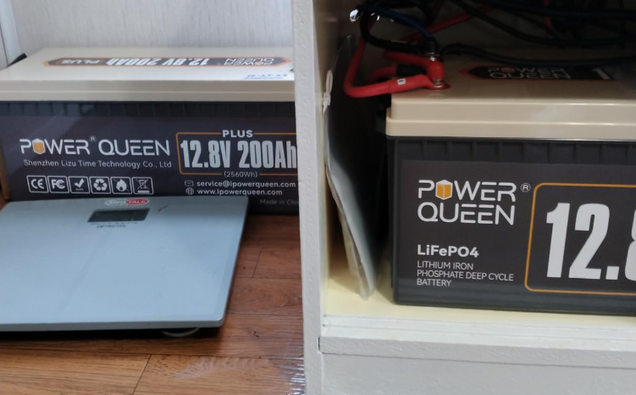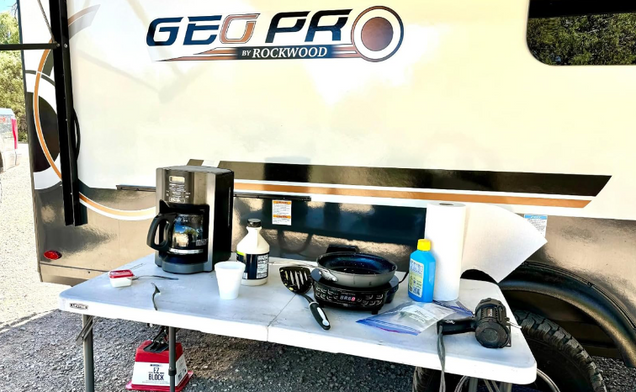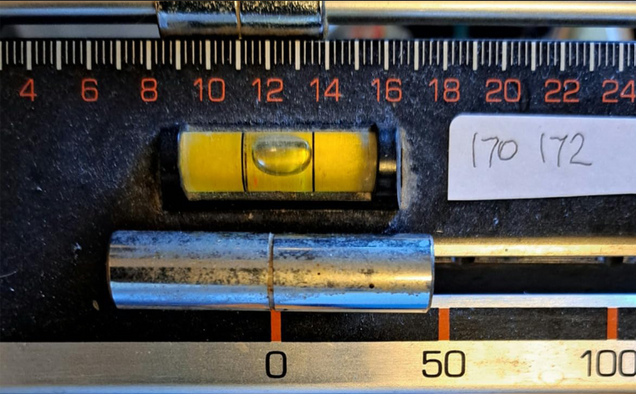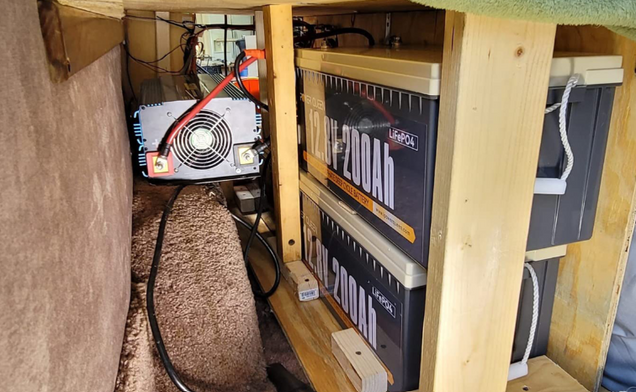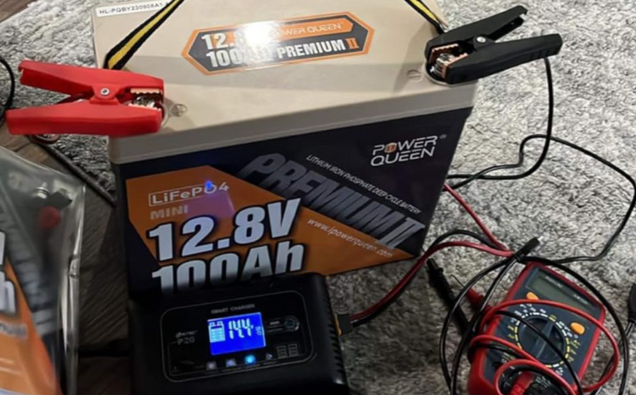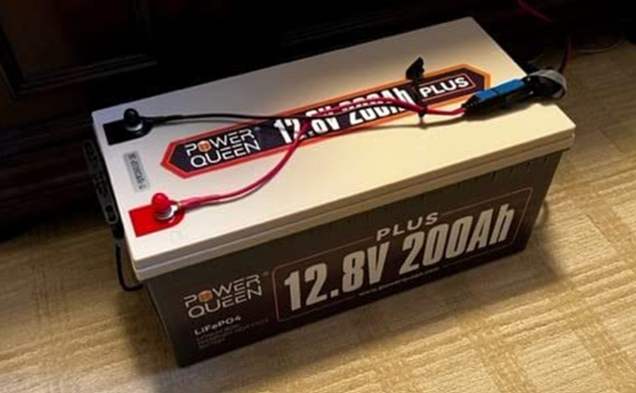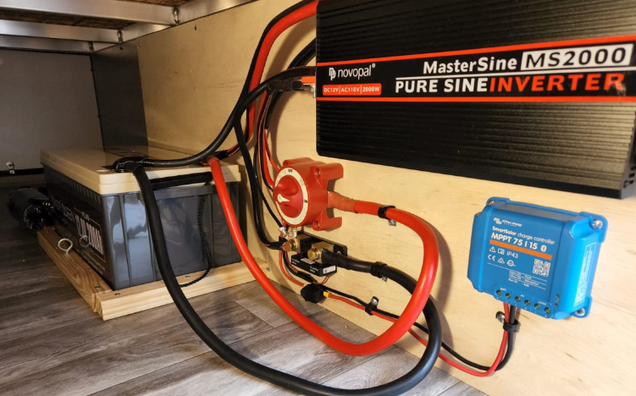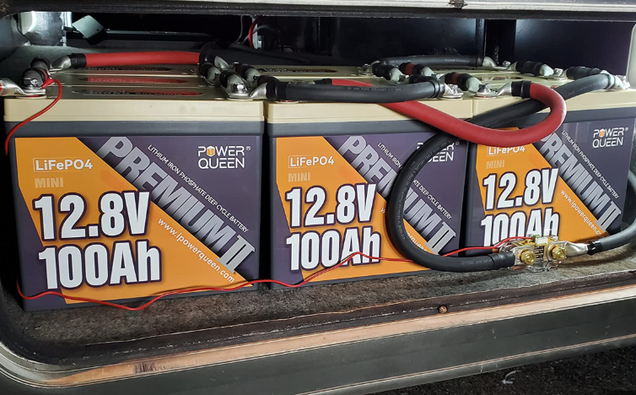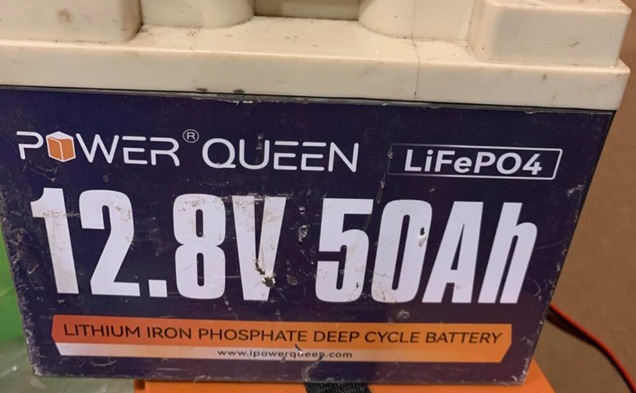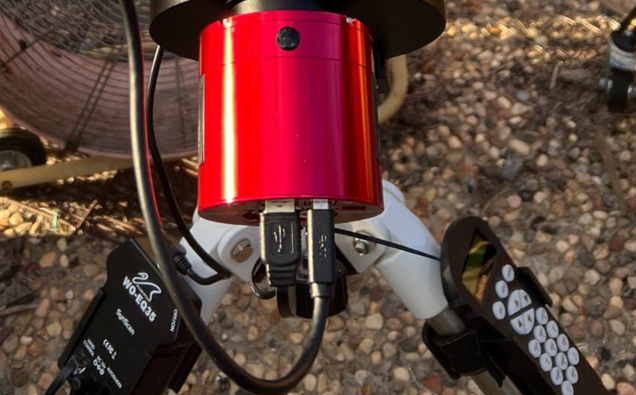All Products
Stop guessing which charger fits your battery! Power Queen Lithium battery and charger kits are engineered for full compatibility, matching voltage, connectors, and protection features. Whether you're powering an RV, boat, or solar setup, order now for a worry-free, all-in-one solution that works out of the box LiFePO4 battery.
10 products
-
-
-
-
-
-
-
Bluetooth | Low-TempPower Queen 12V 100Ah Group 24 Smart Deep Cycle Lithium Battery With 12V 20A Charger Kit$285.98 $469.98
-
-
-
Why Choose Power Queen?
10-year Lifespan
Delivers over 4000+ deep cycles (10-year lifespan), 8 times the lifespan of traditional lead-acid batteries, saving you time and replacement costs.
5-Year Warranty
Backed by a full 5-year warranty for quality and performance. Get reliable coverage and long-term assurance with every Power Queen battery.
Smart BMS Technology
Advanced battery management system protects against overcharge, short-circuit, and low-temperature damage,built for safety in every season.
Eco-Friendly & Lightweight
Super lighter than lead-acid batteries and made from recyclable materials, portable power with a cleaner footprint.
100% Safe & Reliable
Built with EV-grade LiFePO4 cells and tested for tough environments, stable, safety, and ultra dependable.


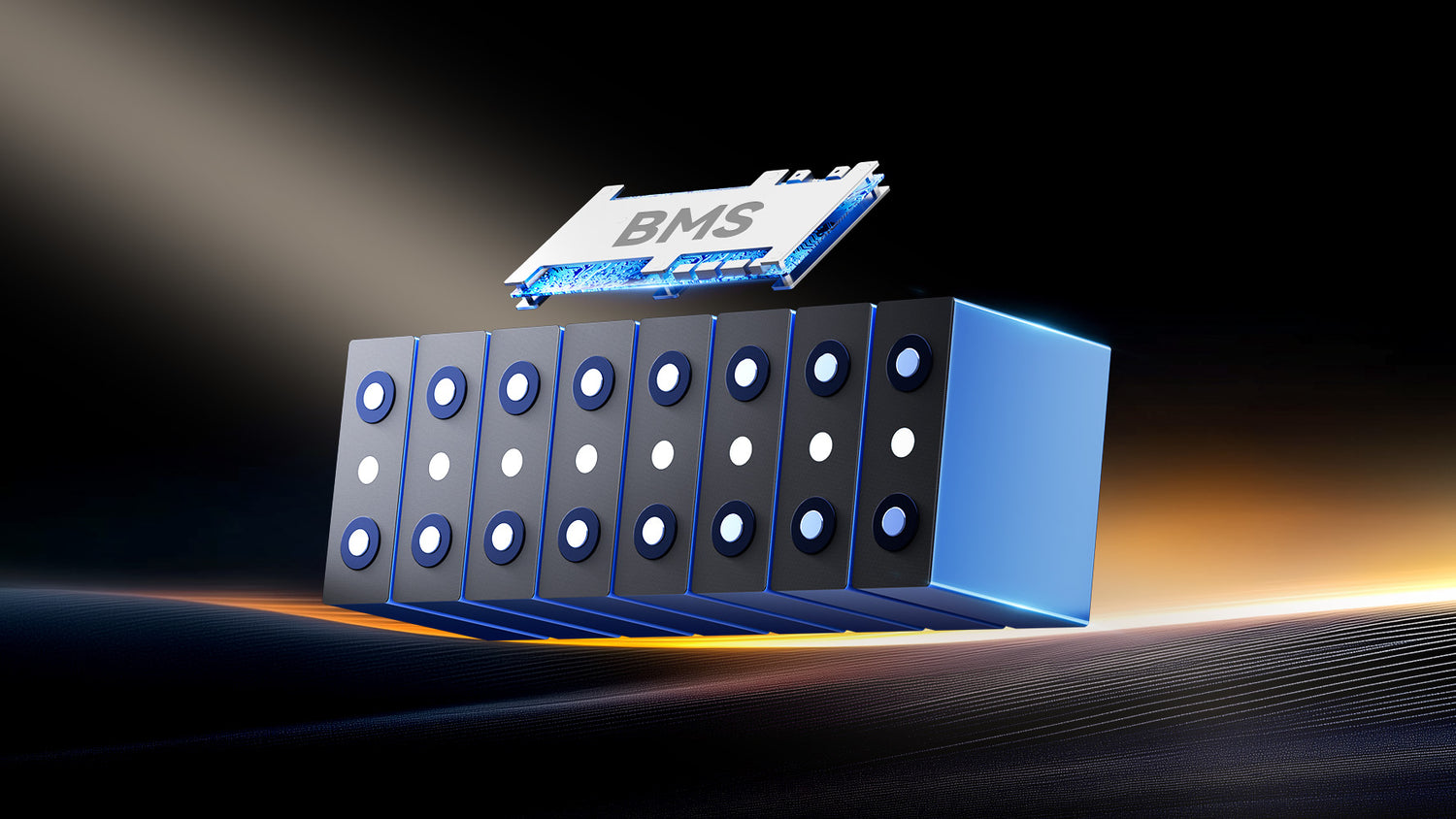


5000+real user reviews
30-Day Free Returns
5-Year Warranty
Fast & Free Shipping
Customer Testimonials
Technical Benefits & FAQs
Will the battery be fully charged when I receive it?
Due to the requirements of battery transportation, we will charge the battery to a 30%-50% charge level before we ship it to you. So the battery is not fully charged when received, we recommend fully charging it before starting to use.
Does Power Queen have Anderson Connector inbox?
Yes, the majority of Power Queen's chargers come equipped with Anderson connectors. For example, models like the Power Queen 14.6V 10A, 14.6V 20A, 14.6V 40A, and 29.2V 20A chargers include Anderson connectors along with M8 battery terminals, providing a convenient and secure connection.
If you are purchasing our LiFePO4 battery, it's recommended to check the product manual or contact the seller to confirm whether the Anderson connector is included to ensure compatibility with your charger.
Can the battery be discharged while charging?
It's allowed to charge the battery while discharging, but simultaneous charging and discharging is not recommended, as it may affect the battery's lifespan.
Why it is recommended to store the batteries at a 50% charge level?
The reason why we recommend storing the battery at a 50% charge level is that the composition and performance of the battery are relatively stable at 50% charge, and a 50% battery charge level is relatively better for long-term storage compared with 100% fully charged.
The voltage dropped from 14.2V to 13.4V, why so fast? Is the battery damaged?
Based on the characteristics of Lithium Iron Phosphate (LiFePO4) batteries, the voltage measured by all LiFePO4 batteries during charging is not the real voltage of the battery. Therefore, after charging and disconnecting the battery from the power source, the voltage of the battery will gradually drop to its real voltage.
If you need to test the real voltage of the battery, please charge and disconnect the power supply and test its voltage after putting it aside for over 3 hrs. After you test it, please kindly let us know the value.
Can a 29.2V charger charge a 24V battery system with two 12V batteries in series?
Yes, if the charger is compatible with LifePO4 batteries, the 29.2V charger is suitable for charging a 24V battery system consisting of two 12V batteries connected in series.
Why does the battery shut down when I turn on the inverter, how fix it?
There is a capacitor in the input port of the inverter. When the inverter is switched on, the battery needs to charge the capacitor first if the capacitor is off power, and when the capacitor is fully charged the inverter can start with load normally.
The inrush current during the charging of the capacitor is very high and if the capacitor is not fully charged during one turn-on, the BMS will cut the circuit to protect the battery.
We recommend that you add a surge suppressors or resistors with a power of 10W to 50W and a resistance of 20Ω to 50Ω between the battery and the inverter, which can be connected for only 3-5 seconds to solve this problem.
Where are the terminal bolts?
Please remove the sticker from the foam sponge and the bolt can be found in the hole underneath the sticker.
Why does the manual recommend a busbar for parallel connections?
The manual recommends the use of busbars when connecting in parallell,It is because the busbar helps reduce the number of connections at the same battery terminal, minimizing contact resistance and maintaining better performance among all connected batteries, ensuring that each battery is charged and discharged at the same rate so that each battery draws the same current, resulting in more stable system operation.
Are Power Queen LiFePO4 Lithium batteries safe?
Yes, LiFePO4 (Lithium Iron Phosphate) is one of the safest and most stable types of lithium batteries available today. Power Queen lithium cells are UL certified, which ensures the highest degree of safety and sustainability. Each Power Queen LiFePO4 battery includes a Battery Management System (BMS) that provides complete protection against a number of hazards. These include under-voltage during discharge, over-voltage when charging, over-current during discharge, over-temperature during both charging and discharging, and short-circuit events, which prevent the battery cells from being damaged. Furthermore, Power Queen LiFePO4 batteries have been thoroughly tested and confirmed to be free of fire and electric shock hazards, even under extreme conditions.
How do I store Power Queen LiFePO4 lithium batteries?
Power Queen LiFePO4 batteries should be stored at a 50% state of charge (SOC) for maximum performance. If the batteries will be stored for an extended period, they should be cycled at least once every six months. The ideal storage temperature range is 10℃ to 35℃ (50℉ to 95℉), with a relative humidity of 45% to 75%.
For further information, see the article Storing LiFePO4 Batteries: A Guide to Proper Storage.
How do I know what size the Power Queen LiFePO4 lithium battery I need?
The Power Queen LiFePO4 lithium battery has approximately twice the useful capacity of lead acid and AGM batteries. So, if you want more useful battery time (Amps), switch to a battery of the same (or greater) Amps. For example, replacing a 100amp battery with a Power Queen 12V 100Ah LiFePO4 Lithium Battery will result in almost twice as many useable amps while weighing half as much. If you want a battery that is small, lightweight, and economical. Then, swap out the 100-amp battery for a Power Queen 12V 50Ah LiFePO4 Lithium Battery. You will obtain roughly the same number of usable amps (time), but it will be less expensive and about one-sixth the weight.
What should I do when receive the lithium battery?
Please bear in mind that due to transit and storage, your battery may have a low State of Charge (SOC) when delivered. To prevent overdischarge, we recommend charging the battery right away with an AC-DC lithium battery charger or an MPPT solar charge controller.
If you intend to store the battery for an extended period of time, we recommend charging it to a state of charge (SOC) of 30% to 50% and doing maintenance every three months. These methods will help it work and perform well in the long run.
Can I use Power Queen LiFePO4 Lithium batteries as starting batteries?
No, Power Queen LiFePO4 lithium batteries are designed for energy storage, not for starting devices. Therefore, please do not use them to start any equipment.
For more information, refer to the article "Deep Cycle vs. Starting Battery."


